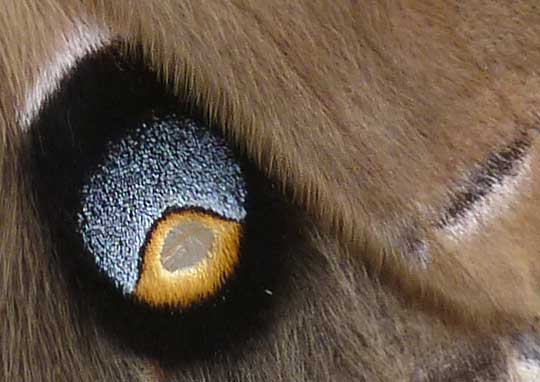Excerpts from Jim Conrad's
Naturalist Newsletter
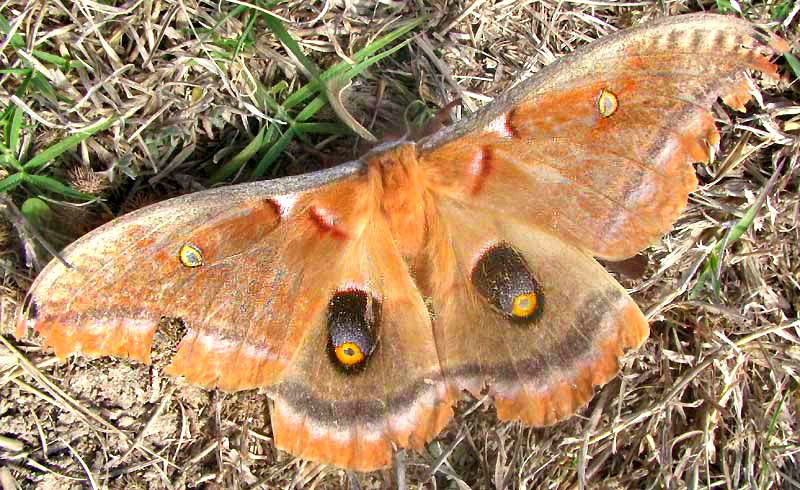
from the March 10, 2013 Newsletter issued from the valley of the Dry Frio River in northern Uvalde County, southwestern Texas, on the southern border of the Edwards Plateau; elevation ~1750m (~5750 ft); N29.62°, W99.86°; USA
POLYPHEMUS MOTH
Trundling down the dusty gravel road on the bike I kept my head low to avoid the dust a hard wind was kicking up and that's why I saw brown, papery wings being knocked about by the breezes. They were being held in place by the plump body and ground-clinging legs of the Polyphemus Moth, ANTHERAEA POLYPHEMUS, shown below.
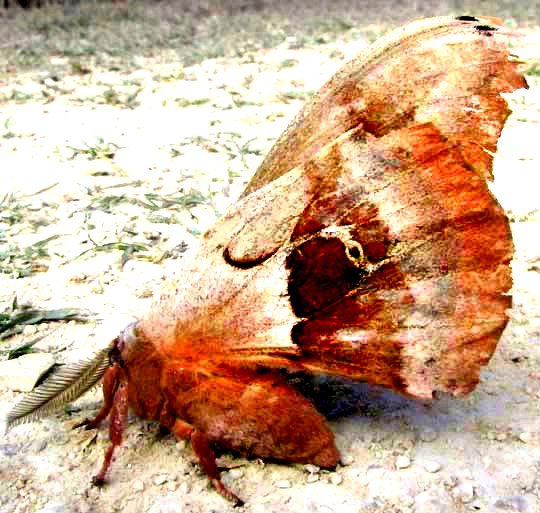
Polyphemus Moths are members of the spectacular Giant Silkworm Family of moths, the Saturniidae, so already I knew the main points about their life history. For instance, that Saturniid moths like Polyphemus possess only useless, vestigial mouthparts and no digestive tracts, so they never eat. They simply emerge from their silken cocoons, females emit sex pheromones that can be detected by males well over a mile away (2kms), the male finds her using pheromone detectors in his oversized, featherlike antennae, they mate, the male promptly dies but the female flies away and lays her eggs, and then she dies too. Our Polyphemus was still alive, able to keep upright in the wind, but otherwise not moving at all.
I knew he was a male because his antennae were so large. From the battered, faded appearance of his wings and his lethargy, I guessed that either he'd already mated and now was dying, or maybe he'd been unable to find a female the night before, and now was simply running out of energy, and dying. You can confirm that really he has no mouthparts -- no coiled, strawlike proboscis like other kinds of moths and butterflies -- in the picture below:
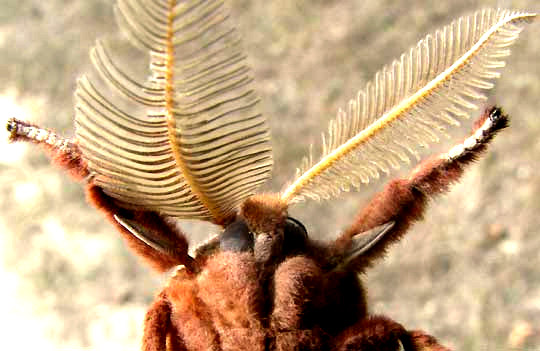
After taking the above picture, when I returned our moth to the ground, he seemed unable any longer to hold his wings upright. He spread them across the ground, revealing his wings' eyespots, shown at the top of this page.
The eyespots, which in Nature might frighten away a predator mistaking them for owl eyes, are responsible for the moth's name, for Polyphemus was the name of the giant, one-eyed Cyclops of ancient Greek and Roman mythology.
The Giant Silkmoth Family contains some of the world's largest and most colorful moths, and the Polyphemus is one of our largest moths, with a wingspan of up to 5½ inches (14cm).
I was a little surprised to see a Polyphemus Moth here because I associate them with humid eastern America. However, I read that local populations of them occur throughout subarctic Canada and the US. Their caterpillars feed on a large variety of plants, from pear trees to hickories, and that includes oaks such as our abundant Texas Liveoaks.
from the March 9, 2014 Newsletter issued from the valley of the Dry Frio River in northern Uvalde County, southwestern Texas, on the southern border of the Edwards Plateau; elevation ~1750m (~5750 ft); N29.62°, W99.86°; USA
POLYPHEMUS EXACTLY ON TIME
Exactly one year ago, in our March 10, 2013 Newsletter, a Polyphemus Moth encountered beside a dusty gravel road in the Dry Frio Valley below Juniper House was featured, shown above. That moth, apparently a male at the end of his brief life, was tattered and faded. This week another male turned up, but he was freshly emerged and was so vividly colorful and luxurious hairy that it was a pleasure just to look at him. Below, you can see him, photographed by my neighbor Phred on his garage door:
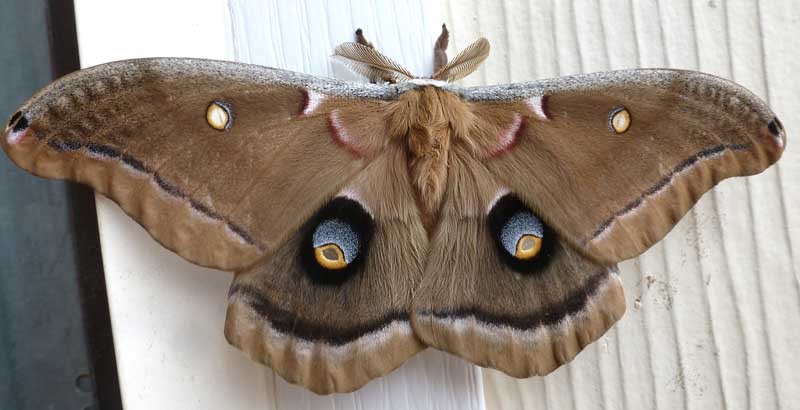
A study of one gorgeous section of the wing is seen below.
